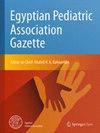持续肾脏替代疗法儿童所用的抗凝方法和抗凝血酶 III 水平监测的作用:一项横断面观察研究
IF 0.5
Q4 PEDIATRICS
引用次数: 0
摘要
在重症病例中,CRRT 是一种肾脏替代干预措施。CRRT 提前(非选择性)终止的最常见原因是体外循环中的凝血,尤其是过滤器中的凝血。为了确定在整个 CRRT 过程中血栓和出血并发症的发生频率、抗凝血酶 III 水平监测的作用、抗凝类型、剂量以及用于监测的实验室检查。这项研究针对 58 名正在接受 CRRT 治疗的儿童进行。这些儿童接受了全面的病史采集、评估、CRRT 处方参数和更改、血管通路数据、抗凝类型、剂量和调整,以及抗凝血酶 III 水平监测。此外,还记录了任何体外循环凝血或出血情况。在接受检查的 58 个疗程中,有 25 个疗程(43.1%)导致过滤器凝血。16例(27.6%)治愈,8例(13.8%)导致患者死亡,9例(15.5%)出血危及生命。其余 33 个病例(56.9%)的过滤器凝结未终止。在所研究的疗程中,有 41 例(70.7%)使用非分叶肝素抗凝,22.4% 使用肝素-丙胺,5.2% 未进行抗凝,1 个回路(1.7%)使用区域性枸橼酸抗凝。滤过性凝血发生率与疗程结束时的活化部分凝血活酶时间(PTT)值(P 值 = 0.000)和疗程开始 4 小时后的血小板计数(P 值 = 0.048)明显相关。输注肝素前抗凝血酶 III 水平低于 80 的患者接受肝素栓剂的剂量较高,中位剂量为 35(IQR 20-35),这种关系具有统计学意义(P 值 = 0.042)。在接受检查的 58 个病例中,出血发生率为 32.8%;但有 19% 的病例出血并不严重。在研究组中,滤器凝结的发生率为 43.1%。疗程结束时的 PTT 值和 4 小时后的血小板计数可预测 CRRT 期间的血栓并发症,而疗程前抗凝血酶 III 缺乏可预测滤器凝结。本文章由计算机程序翻译,如有差异,请以英文原文为准。
Anticoagulation methods used and role of antithrombin III level monitoring in children on continuous renal replacement therapy: an observational cross-sectional study
In critically ill cases, CRRT is a renal replacement intervention. The most common reason why CRRT terminates prematurely (non-electively) is clotting in the extracorporeal circuit, more especially in the filter. To determine the frequency of thrombotic and hemorrhage complications throughout CRRT, the role of antithrombin III level monitoring, the type of anticoagulation, and the dose and laboratory tests utilized to monitor it. The study was carried out on 58 children who were undergoing CRRT. The children underwent a comprehensive history-taking, assessment, CRRT prescription parameters and alterations, vascular access data, anticoagulation type, dose, and adjustment, as well as monitoring of antithrombin III levels. Furthermore, any extracorporeal circuit clotting or bleeding was documented. Of the 58 sessions that were examined, 25 (43.1%) resulted in filter clotting. The indication was cured in 16 cases (27.6%), 8 cases (13.8%) resulted in the patient’s mortality, and 9 cases (15.5%) had life-threatening bleeding. The remaining 33 cases (56.9%) were not terminated with filter clotting. Forty-one (70.7%) of studied sessions used unfractionated heparin as anticoagulation, 22.4% used heparin-protamine, 5.2% was not anticoagulated, and one circuit (1.7%) was anticoagulated using regional citrate. Filter clotting incidence was significantly related to activated partial thromboplastin time (a PTT) value at the end of sessions (P value = 0.000), and platelets count after 4 h of session initiation (P value = 0.048). Antithrombin III levels pre-heparin infusion less than 80 were found in patients who received higher doses of a heparin bolus dose, median dose 35 (IQR 20–35), this relation is statistically significant (P value = 0.042). In the 58 cases that were examined, the incidence of bleeding was 32.8%; however, 19% of the cases were not severe. The incidence of filter clotting was 43.1% in the study group. a PTT value at the end of sessions, and platelets count after 4 h could be predictors of thrombotic complications during CRRT, antithrombin III deficiency before sessions is a predictor of filter clotting.
求助全文
通过发布文献求助,成功后即可免费获取论文全文。
去求助
来源期刊

Egyptian Pediatric Association Gazette
PEDIATRICS-
自引率
0.00%
发文量
32
审稿时长
9 weeks
期刊介绍:
The Gazette is the official journal of the Egyptian Pediatric Association. The main purpose of the Gazette is to provide a place for the publication of high-quality papers documenting recent advances and new developments in both pediatrics and pediatric surgery in clinical and experimental settings. An equally important purpose of the Gazette is to publish local and regional issues related to children and child care. The Gazette welcomes original papers, review articles, case reports and short communications as well as short technical reports. Papers submitted to the Gazette are peer-reviewed by a large review board. The Gazette also offers CME quizzes, credits for which can be claimed from either the EPA website or the EPA headquarters. Fields of interest: all aspects of pediatrics, pediatric surgery, child health and child care. The Gazette complies with the Uniform Requirements for Manuscripts submitted to biomedical journals as recommended by the International Committee of Medical Journal Editors (ICMJE).
 求助内容:
求助内容: 应助结果提醒方式:
应助结果提醒方式:


